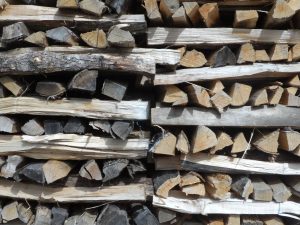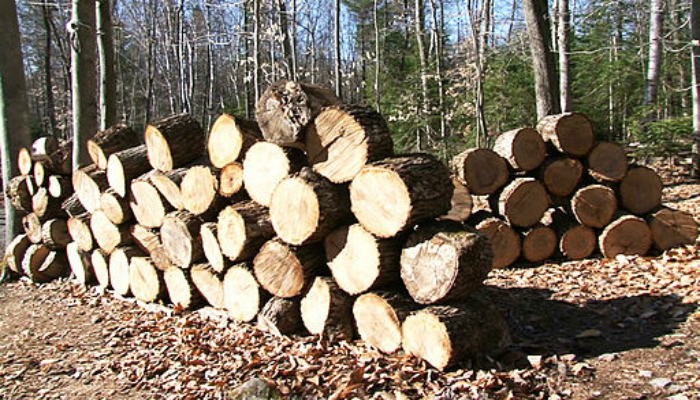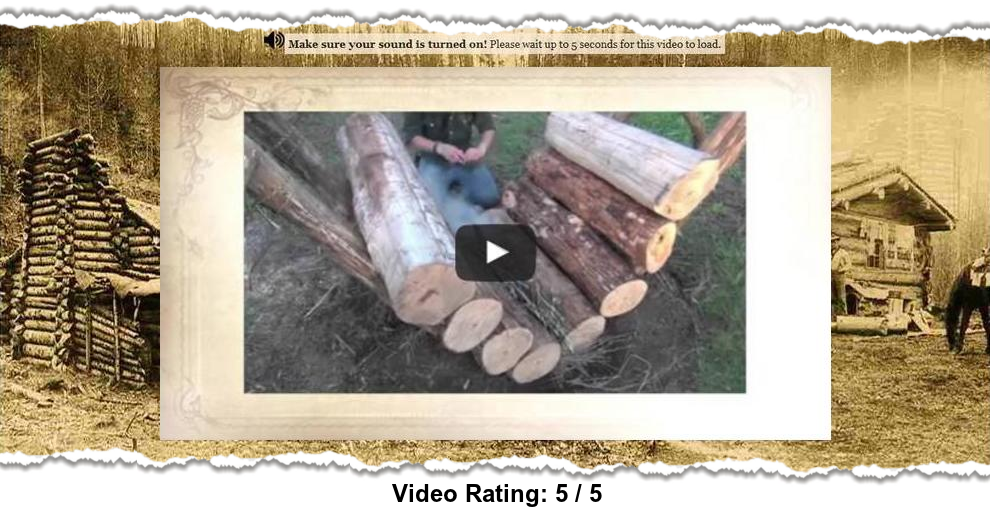One of the things that always amazes me is the way people always wait until autumn sets in to begin cutting and storing up a supply of firewood. I wanted to tell you guys and gals the way I do things here, and perhaps (quantity and geographic variances aside) you can see my overall intent. As you well know, I live in Montana where it is usually bitterly cold with snow on the ground for anywhere from 7 to 9 months of the year. I’m aware this is not the case in most of the U.S., however, there are some good reasons for laying in a firewood supply right now.
Get a permit
Firstly, one of the really good things we have here in Montana is that the U.S. Forestry Service allows residents to pick up a permit (every April) to cut fallen dead and standing dead timber. The permit runs $20 for four cords, and you can pay $60 and take up to twelve cords. That’s a heck of a lot of wood, and dirt-cheap! I’m not sure what it is in other states, however, I am certain that many of them have the same policy.
On this note, I’d love to hear from you and find out what the policy is in your home state: prices and amounts, and such.
The only regulations governing it are you must have a serviceable and up-to-date/inspected fire extinguisher with you if you use a chain saw. In addition, there are certain times (and the USFS posts it) when the fire danger is high or greater. In these periods, it is not permitted to run a chainsaw and harvest that dead timber.
This is the best time to prep for next year’s cold weather
But now is a great time for it! All of the undergrowth has not yet emerged from its winter hibernation, so it is relatively clear to work. I have much of it that I take where it is not permissible to take a vehicle and load up in the forest itself. My way around that is to cut my wood, stack it up, and haul it out with a garden cart. Sears make a pretty sturdy one that holds about 600 lbs, and it’ll run you just under $100 dollars. It has some thick, tough-treaded wheels that can easily run the trails, and not have too much of a problem going over even fields.
 The reason for the wood gathering is twofold. Firstly (from a “normal” thought perspective) you’re laying in your supply for next winter. The early bird gets the worm. You’ll be able to pick up the best wood for yourself when most others are not even thinking about anything except their weekend trip to the beach. Secondly (and also very important) from a prepper’s perspective, is the “What If?” reason.
The reason for the wood gathering is twofold. Firstly (from a “normal” thought perspective) you’re laying in your supply for next winter. The early bird gets the worm. You’ll be able to pick up the best wood for yourself when most others are not even thinking about anything except their weekend trip to the beach. Secondly (and also very important) from a prepper’s perspective, is the “What If?” reason.
What if that EMP attack comes from North Korea or China? What if the economy collapses? What should happen if there is civil war, or a war/invasion here in the U.S.? Yes, your home will be warm already, but what about cooking? What about hot water for laundry or personal hygiene. How about some light when there’s no electricity? And what about emergency medical care that pertains to sterilizing instruments, boiling bandages, and running a home/field dispensary?
All of these, I hope you realize are good reasons to prepare and plan now, so that when the tough times arrive, it is not so great a hurt to deal with. You have seen the news reports, and we’re just a step away from either a war or an EMP attack. As with Aesop’s fable “The Grasshopper and the Ant,” although we in the survival community are hardly grasshoppers, if we’re ants it is best to be wise ants…covering all of the bases before the ball is hit to center field.
Now is the time to set up your wood-fueled “kitchen,” by investing in a good wood stove for heat and for cooking. The wood stove also cuts down on the light signature at night…much better than a fireplace. Along with the stove, start investing in cast iron cookware and utensils for cooking that can withstand rougher treatment than your standard dinner fare.
How to estimate how much wood you will need
If you have not done so already, now is a good time to estimate how much wood you will go through in the wintertime, and then estimate how much you would need to have a fire/woodstove burning 24 hours a day. In the summertime it is significantly less, but take your winter consumption and double it, just to be on the safe side. Typically, a cord of wood is 4 feet wide x 4 feet high x 8 feet long stacked and adds up to 128 cubic feet. As well, the cords may consist of whole logs or split logs. Here is some great information on how to estimate cords of wood from a standing tree.
Invest in a good gas-powered chain saw, like an Echo with at least 5 extra chains, and plenty of rattail files to sharpen them when you need to. Remember, you don’t want to buy cheap tools. Always look at these as a necessary investment, because they will be a lifesaver in an off grid situation. Also in that equation, you’ll need a good bench vise to help you to sharpen them. Stock up on oil and fuel for the saws. Back all of it up with several good axes, and as many bow saws as you can find. Remember: if you run out of fuel, you’ll have to do it the old-fashioned way.
So take some time to figure out your fuel needs to heat your home with wood and to fulfill the other functions I have just mentioned. Now is the time to do it, and it can be a good team experience for the whole family. Make sure you always pack a first aid kit in your excursions and thoroughly familiarize yourself with the operation of all your cutting and safety equipment. Happy woodcutting! We encourage your input and thoughts in these matters and hope to hear from you soon! JJ out!





